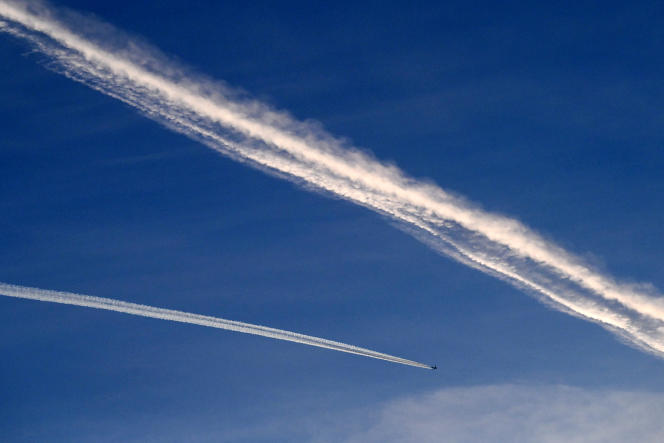Already criticized for its CO emissions2 which contribute to global warming, air transport is also beginning to be singled out for its contrails which stretch in the wake of planes. These trails have experienced a resurgence in notoriety in recent years since some conspiracy theorists accuse them of all evils: spread of cancer, sterilization of populations or even the dissemination of the virus responsible for Covid-19.
In reality, these “contrails”, contraction in English of contrails, are only a result of the combustion of kerosene. They are formed at the exit of the reactors when the planes fly “at a certain altitude and under certain conditions of atmospheric pressure and temperature”explains Patrick Le Clercq, director of the multiphase flows and alternative fuels department of the Stuttgart Institute of Combustion Technologies.
In recent years, scientists around the world have taken a close interest in “non-CO effects2 » air transport. That is, pollution from aviation other than that related to carbon dioxide emissions. “Two-thirds of the global warming linked to aviation comes from these non-CO2 effects.2 »explains Mr. Le Clercq.
Like a lid
Worse : “Within these effects, it is the contrails that have the most important and visible impact” on the environment, notes, for his part, Matteo Mirolo, specialist in sustainable aviation within the NGO Transport & Environment. Contrails are formed at the outlet of the reactors by the condensation of water around the soot released into the atmosphere after the combustion of kerosene.
This phenomenon “Participating in the formation of clouds, high cirrus clouds, linked to human activity and not to nature”, deciphers Mr. Le Clercq. And to add: “In a small number of cases, these clouds cover a significant surface of the globe, especially in North America or Northern Europe, where there is heavy air traffic. » It is precisely these clouds that are the problem. “They form a veil over part of the globe, which modifies the radiative balance”continues Mr. Le Clercq.
It must be understood that, at night, like a cover, this veil prevents the Earth from sending back out of its atmosphere part of the heat stored during the day. This pressure cooker effect has consequences. “When we take stock of the action of these trails over several years, we see that it contributes to global warming”, explains the researcher. For now, there is no consensus within the scientific community on the impact of contrails on the environment. “The results are scatteredadmits Mr. Le Clercq. More impact than CO2 for some, less than CO2 for the others. » But the proof is made that contrails contribute more or less to global warming.
You have 46.81% of this article left to read. The following is for subscribers only.
